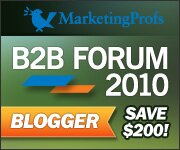
”All growth is a leap in the dark, a spontaneous, unpremeditated act without the benefit of experience.”
-henry miller
What does that mean? That most growth happens by stepping out of the ordinary. Understanding that by doing everything the same, change will never happen. Revenue trends won’t shift.
Consumers these days move at the speed of light. If they are the PR girl, they have a BlackBerry in one hand, handbag and laptop bag slung over one shoulder while power walking in 4 inch heels. This mental image is one I thrive on – it showcases that those in PR do whatever it takes to keep the brands they represent abreast of information, research and understanding. (I promise I’ve never seen Justin with any of these things, except the BB. And he power walks faster than I do.)
One of our VPs (Kara Hendon) said something in an email that resonated with me, “Shifts do not equal death.” She’s exactly right. It’s why education at the foundation is important – it’s scary to jump. It’s scary to shift. It’s scary to think of something new, and then present it to a client. In a true partnership, they will trust the agency enough to listen to the idea. The agency just has to make sure they know the jump isn’t scary.
How does an agency get a brand to embrace the shift?
Understand Specific Client Communication
I observe our Senior Leadership Team on a quite regular basis. It might be intuitive, or years of practice, or just knowing how to read people. However, the SLT has the knack to add small, personal touches to meetings, e-mail communication and general correspondence. By creating a partnership with the brands we work with, they know that Brand A prefers weekly phone updates; that Brand B likes to have tea instead of coffee at meetings; and that Brand C prefers key takeaways at the top of every document. It’s understanding client communication.
Why is this important? Everyone wants to feel valued. By being observant, you understand their environment. This creates a trust factor. If they are trusting their agency with their entire brand, you better be able to trust yourself enough to understand their tendencies and where they are coming from. It’s general business tactics that come with years of experience.
Be There At The Start
Education is key. On the B2C side, many deal with brands that have a sales-oriented mindset in a market-oriented world. Honestly? They should. The bottom line is to drive business, retain customers and see an increase in revenue. The differentiator, though, is how they adapt to the market and how consumers wish to be communicated and advertised to. The successful B2C brand will instinctly understand that by building trust with the consumer, they create a domino effect of: a.) the consumer verbally or digitally talking about the brand; b.) Consumer retention, even if a better competitor product exists; and c.) positive association with the brand.
I always tell brands to, “own their industry, not the product.” Why? Consumers tend to go with a product that will get the job done with outstanding customer support, rather than the bells and whistles with no support. Why? If a consumer can’t figure out the bells and whistles, it’s not worth the investment.
Understand That It Takes Time
Imagine that you’re at the edge of a cliff, contemplating whether to jump or not. You’re jumping into the unknown. This is something that brands feel on a daily basis. Exercise patience. Just because you understand it, doesn’t always mean that the client will. Many scoff at 101 books and presentations, but the value in them is to refresh and show where many brands still are. That knowledge will help to fine tune presentations and speak at a level that the brand understands – not what you as the agency understand. At the end of the day, it is their brand, their decisions. The education counsel offered is just that, an offer. It’s up to them to decide what to do with it.
Welcome to today. What are you going to do with it?
How do you explain the shift to brands?




